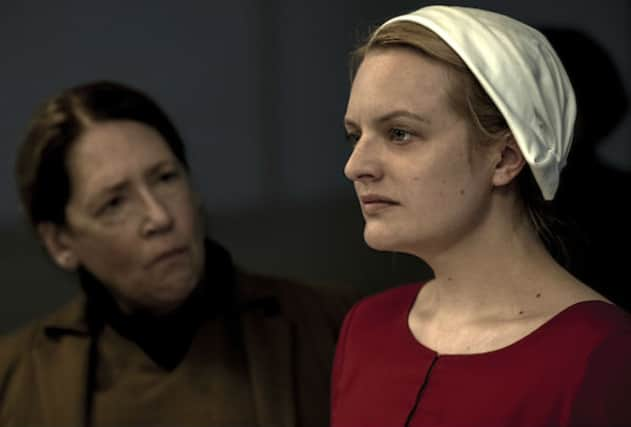The Handmaid's Tale: how season two expands the drama - a spoiler-free review


This article contains affiliate links. We may earn a small commission on items purchased through this article, but that does not affect our editorial judgement.
*The Handmaid's Tale season two starts on Channel 4 on May 20. This is a spoiler-free article based on the first two episodes. There will however be spoilers for season one*
Brace yourselves for more stark drama, tense survival, and surprising use of rock and pop standards. The Handmaid's Tale is back.
Advertisement
Hide AdAdvertisement
Hide AdIn the award-winning hands of Elisabeth Moss, the plight of Offred/June in the dystopian theocracy of Gilead retains its compulsive pull, even as its events continue to disturb and haunt.


And as the story moves beyond the confines of Margaret Atwood's original source novel, so too does its setting and focus - with a far more expansive view.
More than one protagonist
The first season occasionally showed things from another perspective, such as Luke's flashback episode and the brief diversions into Serena Joy's past, which provided some much-needed insight.
For the most part however, it was an intentionally claustrophobic drama that homed in on Offred's plight as a prisoner; the camera consistently pressed up against Moss's expressive, agonised or defiant face as despair and abuse reigned around her.
Advertisement
Hide AdAdvertisement
Hide Ad

Here, the shift is notable. From a cinematography aspect, as well as a story one.
We still get plenty of extreme close-ups of Offred's intense reactions, and shots of her isolated in the frame. But now, there are far more wide views of crowds witnessed from the side or the heavens; of entire scenes and environments that we can process and take in in their entirety. Some of these, such as a sequence in the rain, look strikingly beautiful - even though the things they depict could not be more ugly.
For those wondering if pop culture references still play the occasional part, they do. From a Kate Bush song to a classic sitcom.
The camera also frequently follows people as they walk away from Offred, and captures their own private feelings more keenly. And while there are plenty of scenes focused on Moss and her character, this now feels like a drama with multiple protagonists, rather than just one.
Advertisement
Hide AdAdvertisement
Hide AdThis is quite fitting, as the May Day package in last season's finale cast a light on the stories of countless subjugated women. As an early riveting scene reminds Offred - quite literally - suffering and consequences exist far beyond her own experience.
Let's just say that at least one other character well and truly takes the spotlight too.
Dread and anxiety
One crucial expansion of the drama's world is that it finally takes us to the feared 'colonies'; bleak, toxic labour camps that have an almost post-apocalyptic aspect. While mask-wearing supervisors look on, gangs of women hack at smouldering rocks with cracked, bleeding hands.
There are uncomfortable parallels to screen depictions of concentration camps or slave plantations, as well as prison chain-gangs. Here, as befits the supposedly Biblical dictatorship of Gilead, the vision is explicitly Hellish, in the genuine sense of the word. Smoke rises from sulphurous ash; the air thick with toxic fumes.
Advertisement
Hide AdAdvertisement
Hide Ad